The coefficient of friction between block A of mass m1=5kg and block B of mass m2=10kg is μ2=0.5 . There is no friction froce between block B and fixed horizontal surface. A force of 300N acts on block B in horizontal direction and a horizontal force of magnitude F acts on block A as shown , both towards right. Initially there is no relative motion between the blocks. The minimum value of F such that relative motion starts between A and B is :
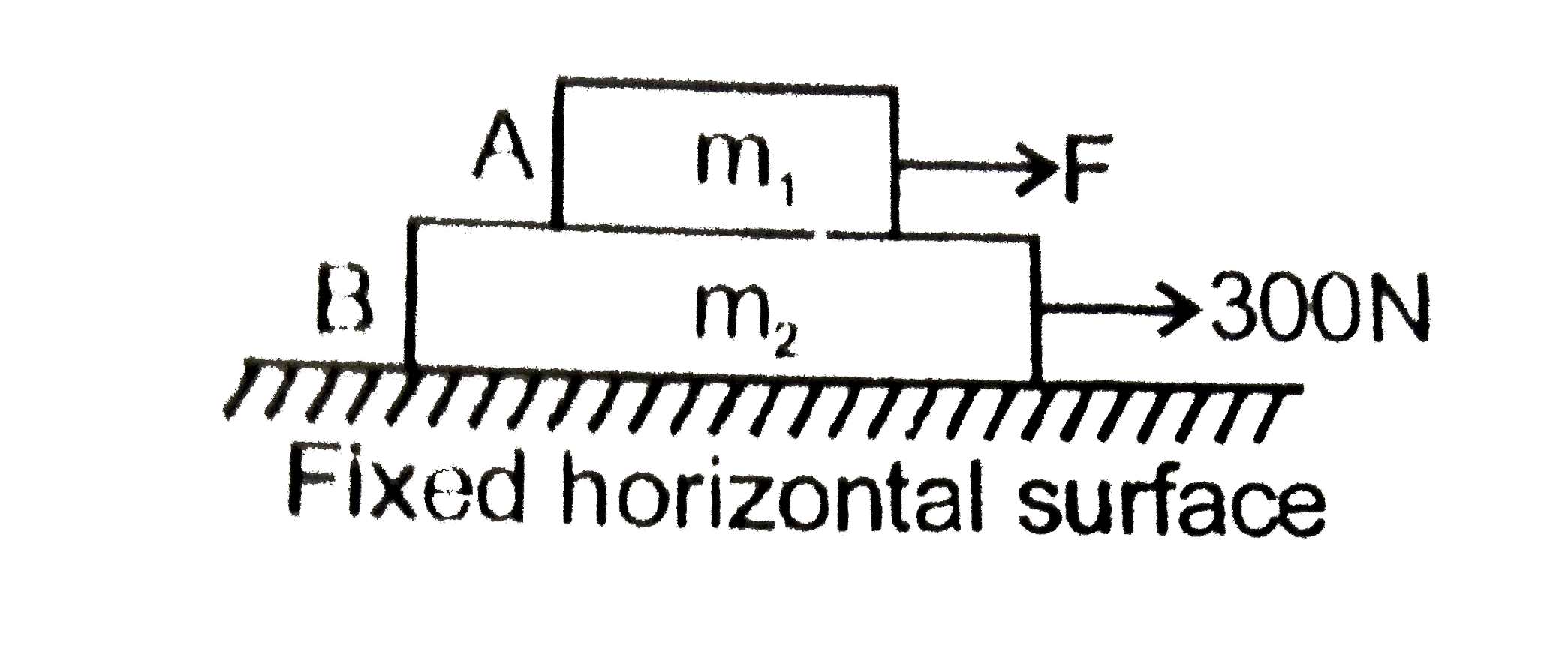
200N
187.5N
150N
0
The correct Answer is:D
If F=0
Then assuming no relative motion acceleration of A+B=30015=20m/s2
∵20m/s2>μg
Where μ+0.5 and g=10ms2
∴ relative motion shall exist. Hence F=0N.
F=0
Topper's Solved these Questions
- DAILY PRACTICE PROBLEMSBOOK - RESONANCECHAPTER - DAILY PRACTICE PROBLEMSEXERCISE - DPP 35
5 Videos
- DAILY PRACTICE PROBLEMSBOOK - RESONANCECHAPTER - DAILY PRACTICE PROBLEMSEXERCISE - dpp 36
5 Videos
- DAILY PRACTICE PROBLEMSBOOK - RESONANCECHAPTER - DAILY PRACTICE PROBLEMSEXERCISE - dpp 33
8 Videos
- CURRENT ELECTRICITYBOOK - RESONANCECHAPTER - CURRENT ELECTRICITYEXERCISE - Exercise
54 Videos
- ELASTICITY AND VISCOCITYBOOK - RESONANCECHAPTER - ELASTICITY AND VISCOCITYEXERCISE - Advanced Level Problems
9 Videos
Similar Questions
On a smooth horizontal surface a block A of mass 10kg is kept. On this block a second block B of mass 5kg is kept. The coefficient of friction between the two blocks is 0.4 .A horizontal force of 30N is applied on the lower block as shown. The force of friction between the blocks is
View SolutionA block of mass 6 kg is being pulled by force 24 N as shown . If coefficient of friction between the block and the surface is 0.6 , frictional force acting on the block is :

View Solution
Knowledge Check
The coefficient of friction between the block A of mass m & block B of mass 2m is μ. There is no friction between block B & the inclined plane. If the system of blocks A & B is released from rest & there is no slipping between A & B then :
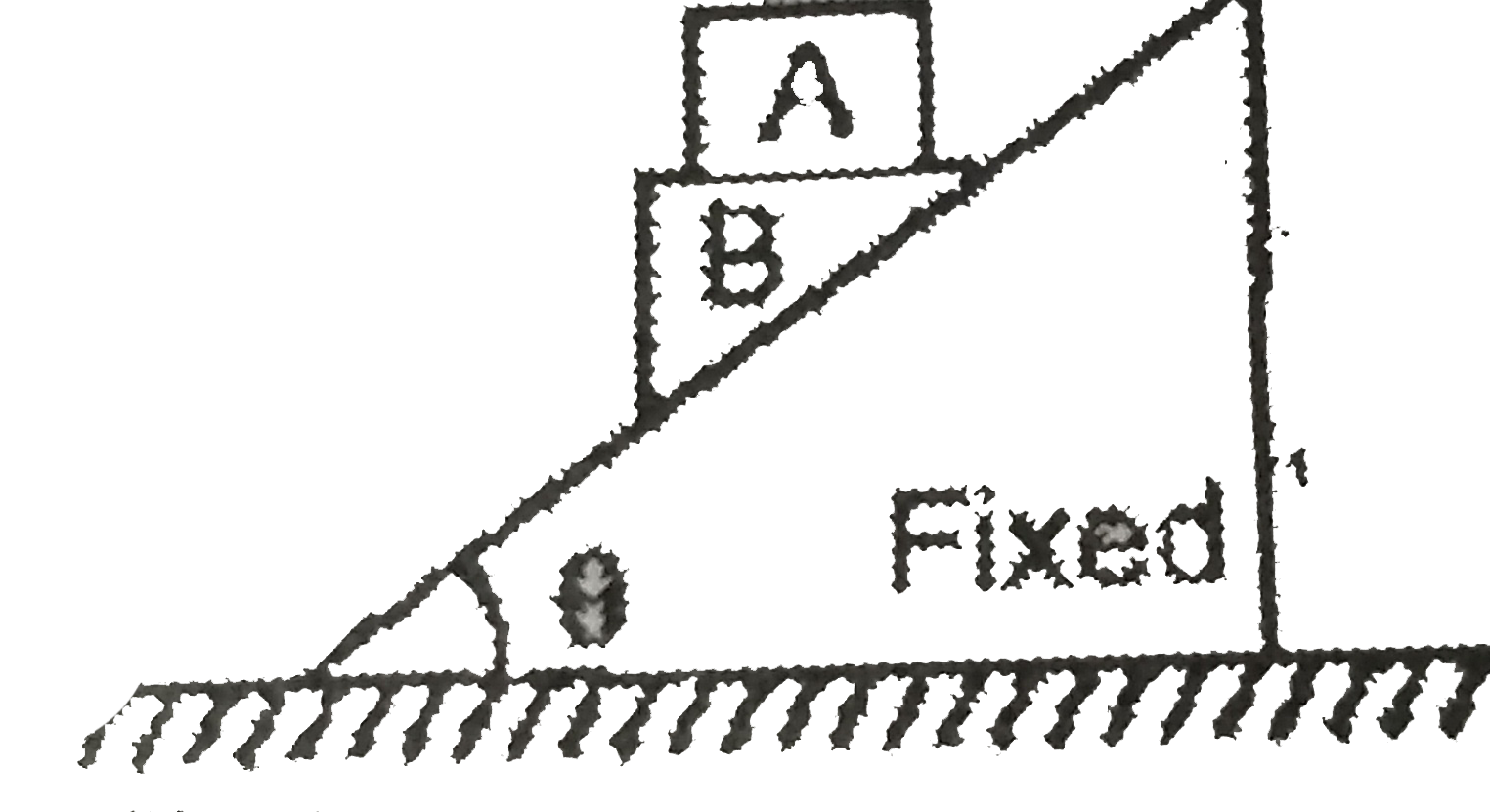 A2θ<sin−1(2μ)Bθ<tan−1(μ)C2θ<cos−1(2μ)D2θ<tan−1(μ/2)
A2θ<sin−1(2μ)Bθ<tan−1(μ)C2θ<cos−1(2μ)D2θ<tan−1(μ/2)A horizontal force F acts on the block of mass m and the block remains stationary, thr value of friction force is.
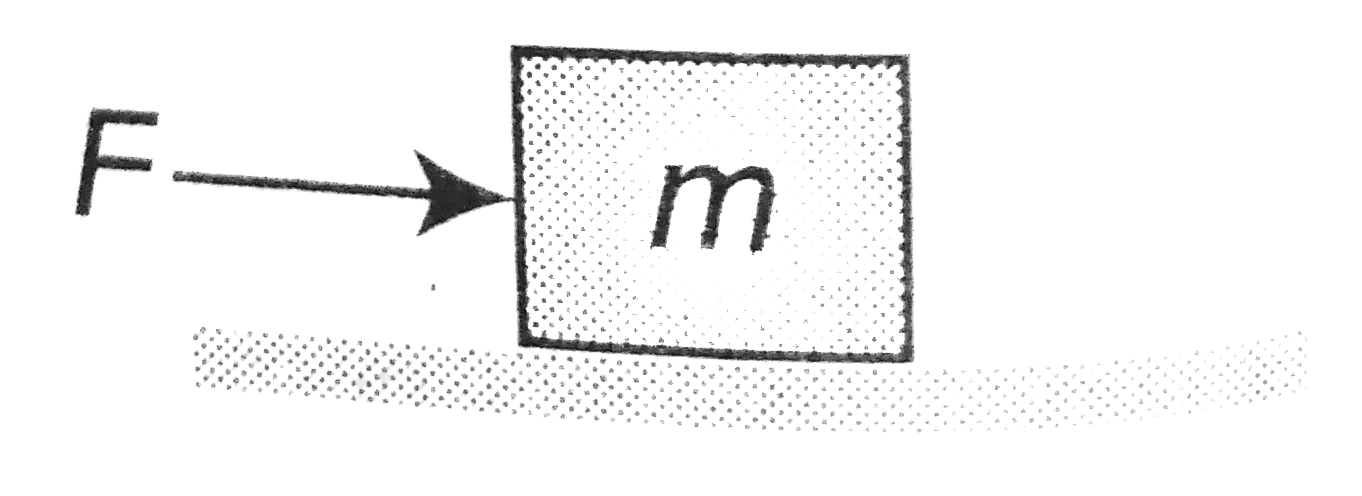 AμmgBμmg−FCFDzero
AμmgBμmg−FCFDzeroWedge is fixed on horizontal surface. Block A is pulled upward by applying a force F as shown in figure and there is no friction between the wedge and the block A while coefficient of friction between A and B is μ. If there is no relative motion between the block A and B then frictional force developed between A and B is
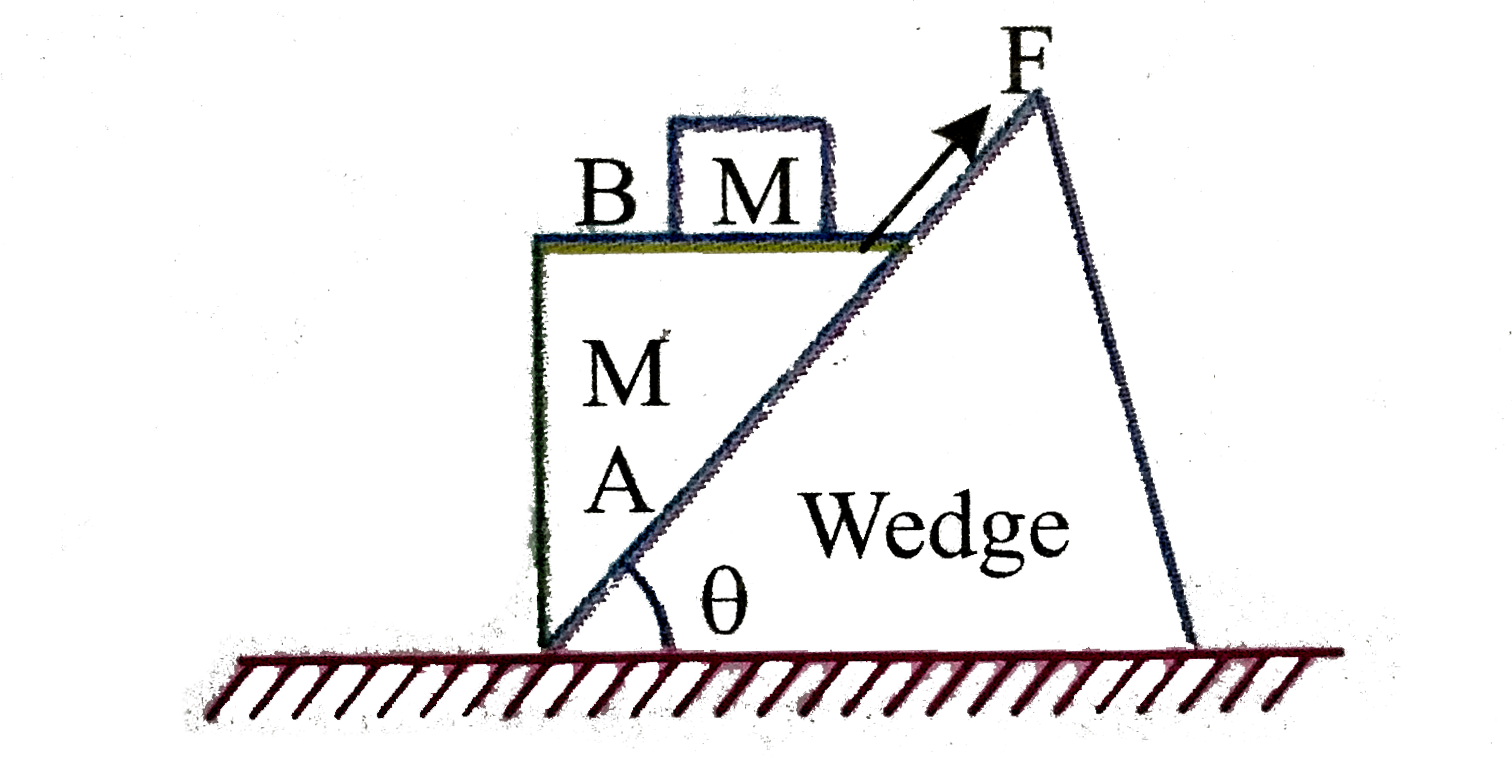 A[F+(m−M)gsinθ(m+M)]mcosθBμmgC[F−(m+M)gsinθ(m+M)]mcosθDμmg/2
A[F+(m−M)gsinθ(m+M)]mcosθBμmgC[F−(m+M)gsinθ(m+M)]mcosθDμmg/2
A varying horizental force F=at act on a block of mass m kept on a smooth horizontal surface An identical block is kept on the first block.The coefficient of friction between the blocks is μ . The time after which the relative sliding between the blocks prevails is
View SolutionA block of mass 2 kg is at rest on a floor . The coefficient of static friction between block and the floor is 0.54. A horizonatl force of 2.8 N is applied to the block . What should be the frictional force between the block and the floor ? ( take , g=10m/s2)
View SolutionBlock A has a mass of 2 kg and block B has a mass of 20 kg if the coefficient of kinetic friction between block B and the horizontal surface is 0.1, and B is accelerating towards the right with a=2m/s2 , then the mass of the block C will be -
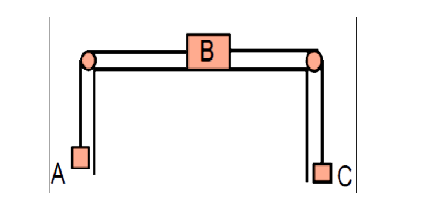
View SolutionA block B of mass 5kg rests on a rough horizontal surface (μ=0.2),A block A of mass 2kg rests on block B(μ=0.4). If a horizontal force of 21 N be applied to the block B, what is force (in N) of friction acting between the blocks A and B ? (g=10ms−2)
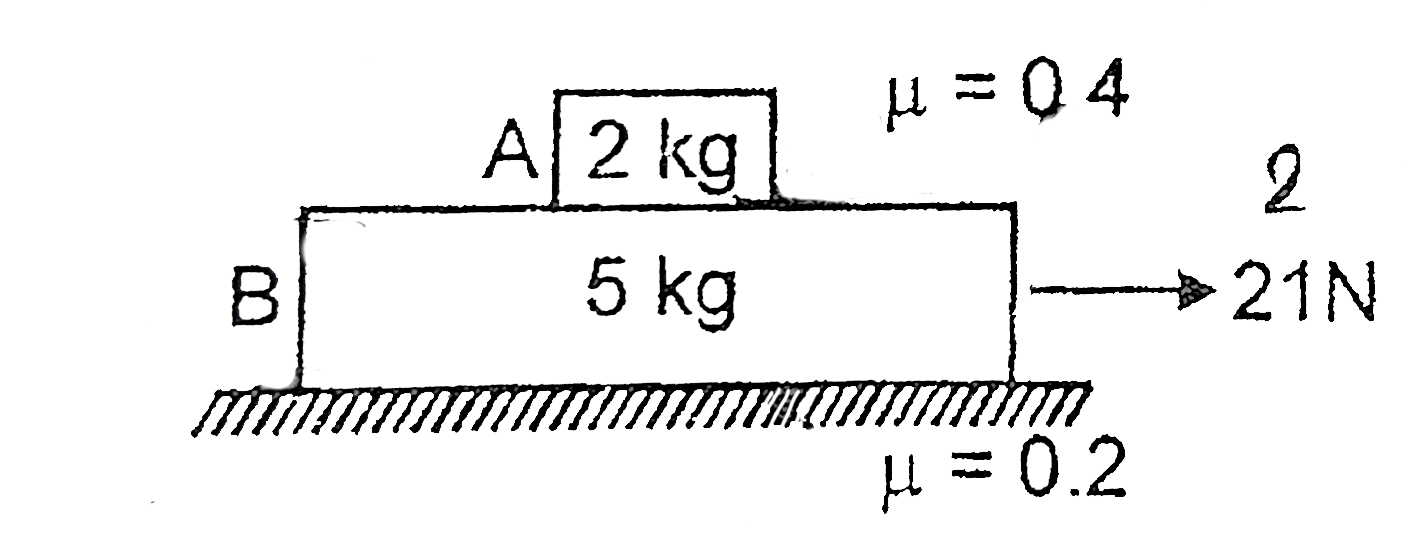
View SolutionA block of mass m is placed on a rough horizontal surface. The coefficent of friction between them is μ. An external horizontal force is applied to the block and its magnitude is gradually increased. The force exerted by the block on the surface is R.
View Solution

